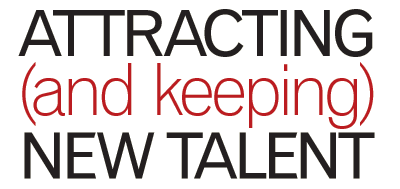A company is only as good as its employees. Part one of this three-part series explores employee retention and recruitment.
Businesses will always be buffeted by factors outside their control—economic, political, environmental and demographic. However, one of the most significant ingredients of success is within control, yet businesses lose billions of dollars in lost opportunities by failing to overcome this pervasive blind spot.
Shared by leaders and managers around the globe, this costly blind spot is the ability to recruit, hire and retain the right people for the right job at the right time, says Claudio Fernández-Aráoz, a recruiting expert with Egon Zehnder International.
One company in the seed industry that recognizes the importance of this is Burrus Hybrids. “We’ve hired capable people. One of my bylines is that we hire people smarter than we are. And we’re pleased to do that. This allows us to nurture them so they can challenge us and move the company forward,” says Tom Burrus of Burrus Hybrids
Because at the end of the day, no matter how bright the future looks, we need a solid foundation, which is why recruitment remains a top priority in the seed industry. “When we look at the evolution of this industry, it is happening very, very quickly. For us to continue to innovate and evolve, we need to have a solid base of students coming out of college with master’s degrees, PhDs in all the sciences, not just breeders, plant physiologists, agronomist breeders, and geneticists,” says Andy LaVigne, president and CEO of the American Seed Trade Association. “And we realize that’s a challenge for us today. Land grant universities have budget issues that are impacting them on a regular basis so it is important that companies play a more active role in the education and training process.”
Recruit and Entice
ASTA has developed a couple of programs to help seed companies with recruitment. “We’re pairing up students with seed industry mentors in our various meetings so they can shadow industry professionals,” explains LaVigne, “to talk to them about what’s out there and the opportunities. We really think there are a host of areas that students can come back to in agriculture and we want them to see the opportunities available to them—not only to meet the demands here in the United States, but to meet the demands globally to feed the world.”
Each year, Campus Connections provides a unique opportunity for students with just one year of undergraduate studies remaining to interact with seed industry professionals and senior executives at major industry events. The students learn more about the various aspects of the seed business, while networking and building a solid foundation with various seed companies.
Retention and Reward
Employee turnover costs U.S. companies more than $140 billion annually in recruiting, training, replacement, administrative and other costs. So in today’s competitive work environment, what is the key to successful retention?
According to Fernández-Aráoz, offering the right incentives, properly designed and fully aligned, is key to holding on to the right people. However, based on his experience with hundreds of companies and thousands of leaders, what great people want is even more straightforward: “They want a great challenge with a great boss,” he says.
Get Past that Gut Feeling
Perhaps the biggest hiring obstacle to overcome is the myth of the gut feeling. Fernández-Aráoz stresses that trusting one’s instincts when making people decisions is like turning over the controls to an old, primitive brain and allowing any number of unconscious psychological cues to sabotage the process. In today’s complex world, that just won’t fly.
“In spite of what most of us believe, great people decisions are not simply a matter of intuition. They are very complex,” he says.
He believes decision-makers must apply the same rigorous, disciplined professionalism to staffing that they apply to financial and marketing decisions. Unfortunately, these skills are rarely taught and few leaders have a solid grounding in them.
“The number one recommendation, whether in good times or bad, is to learn and employ best practices,” Fernández-Aráoz asserts. “Fortunately, this is a craft, a discipline that can and should be learned. There is a tremendous amount of research and a wealth of information is readily available. There are proven processes to drastically improve your hiring successes.”
Leaders must educate themselves about hiring, and companies must be willing to invest enough time in the complex process of making the right people decisions. With a stacked deck, success is yours.
Leslie Vryenhoek and Julie McNabb
|













